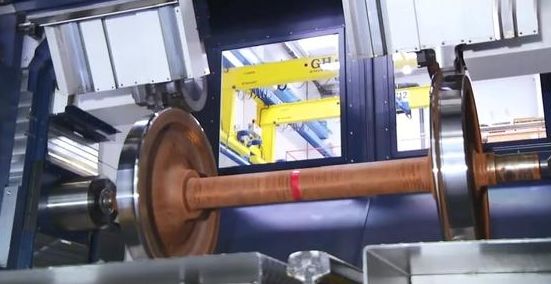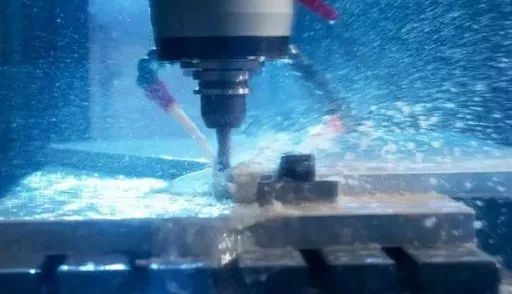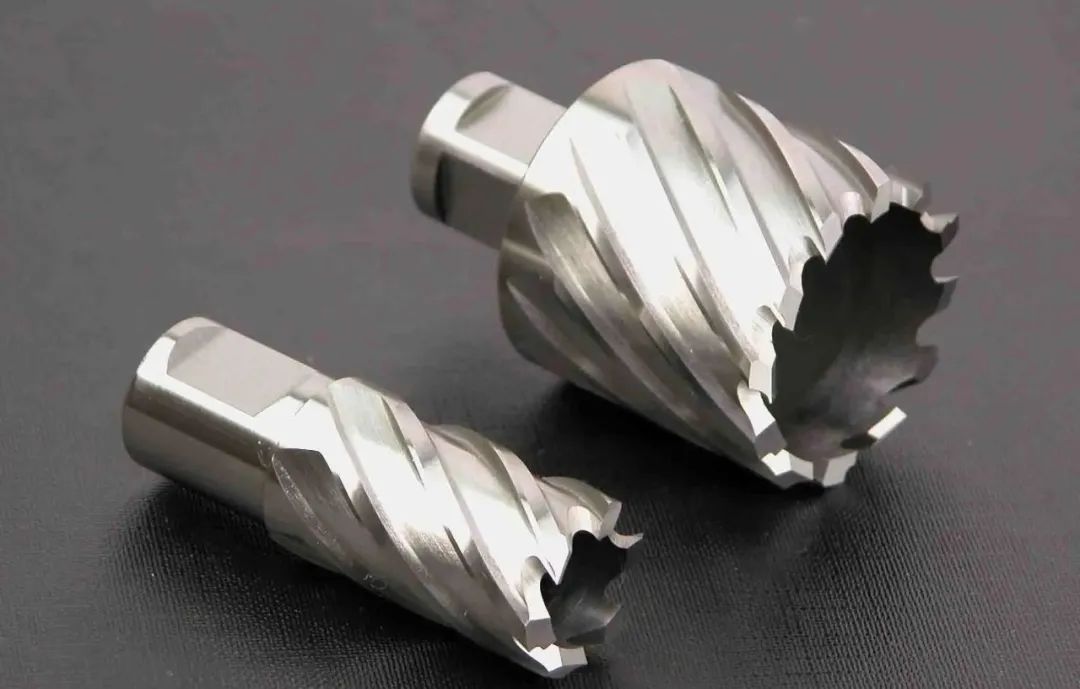Do you know which fields require higher precision for machined parts?
Aerospace:
Aerospace industry parts like turbine blades or aircraft components need to be machined with high precision, and within tight tolerances. This is done to ensure performance and safety. A jet engine blade, for example, may require accuracy within microns in order to maintain optimal energy efficiency and airflow.
Medical devices:
To ensure safety and compatibility, all parts that are machined for medical devices such as surgical instruments or implantables must be accurate. A custom orthopedic implant, for example, may require precise dimensions and finishes on the surface to ensure proper fit and integration in the body.
Automotive:
In the automotive industry, precision is required for parts such as transmission and engine parts. A precision-machined transmission gear or fuel injector may need tight tolerances in order to ensure proper performance and durability.
Electronics:
Machined parts in the electronics industry are required to be highly accurate for specific design requirements. A precision-machined microprocessor housing may require tight tolerances for proper alignment and heat distribution.
Renewable energy:
To maximize energy production, and to ensure reliability, machined parts in renewable technologies such as solar panel mounts or wind turbine components require precision. A precision-machined wind turbine gear system may require exact tooth profiles and alignment in order to maximize power generation efficiency.
What about areas where the accuracy of machined parts is less demanding?
Construction:
Some parts, such as fasteners and structural components, used in construction projects, may not require the same precision as critical mechanical components or aerospace components. Steel brackets in construction projects may not require the same tolerances as precision components in precision machinery.
Furniture Manufacturing:
Some components in furniture manufacturing, like decorative trim, brackets or hardware, do not need to be ultra-precision. Some parts, such as precision-machined components in adjustable furniture mechanisms that require accuracy, have more forgiving tolerances.
Equipment for agricultural use:
Certain components of agricultural machinery such as brackets, supports or protective covers may not need to be held within extremely tight tolerances. A bracket that is used to mount a component of non-precision equipment may not require the same precision as parts in precision agricultural machinery.
The processing accuracy is the degree of conformity of the surface’s size, shape and position to the geometrical parameters specified in the drawing.
The average size is the ideal geometric parameter for size.
Surface geometry is a circle, cylinder or plane. ;
It is possible to have surfaces that are parallel, perpendicular or coaxial. Machining error is the difference between the geometric parameters of a part and their ideal geometric parameters.
1. Introduction
The main purpose of machining accuracy is to produce products. Both machining accuracy and machining errors are terms used to evaluate the geometric parameters of a machined surface. Tolerance grade is used to measure machining accuracy. The higher the accuracy, the smaller the grade. The machining error can be expressed as a numerical value. The greater the numerical value the larger the error. Inversely, high processing precision is associated with small processing errors. There are 20 levels of tolerance, ranging from IT01 to IT18. IT01 is the level of machining precision that is highest, IT18 the lowest, and IT7 and IT8 are generally the levels with medium accuracy. level.
It is not possible to obtain exact parameters by using any method. As long as the processing error falls within the tolerance range specified by the part drawing and is not greater than the function of the component, processing accuracy can be considered guaranteed.
2. Related Content
Dimensional accuracy:
The tolerance zone is the area where the actual part size and the centre of the tolerance zone are equal.
Shape accuracy:
The degree to which the geometric shape of the surface of the machined component matches the ideal geometric form.
Position accuracy:
The difference in position accuracy between the surfaces of the parts that are being processed.
Interrelationship:
When designing machine parts and specifying their machining accuracy, it is important to control the shape error with the position tolerance. The position error should also be smaller than the dimension tolerance. For precision parts and important surfaces, the requirements for shape accuracy should be higher.
3. Adjustment Method
1. Process system adjustment
Method adjustment for trial cutting: Measure the size, adjust the tool’s cutting amount and then cut. Repeat until you reach the desired size. This method is used mainly for small-batch and single-piece production.
Methode d’ajustement: To obtain the desired size, adjust the relative positions of machine tool, fixture and workpiece. This method is high-productivity and mainly used in mass production.
2. Reduce machine tool errors
1) Improve spindle component manufacturing accuracy
The bearing rotation accuracy should be improved.
1 Select high-precision rolling bearings;
2 Use dynamic pressure bearings with high precision multi-oil wedges.
3 Using high precision hydrostatic bearings
It is important to improve the accuracy of bearing accessories.
1 Improve the accuracy of the spindle journal and box support holes;
2 Improve the accuracy of the surface matching with the bearing.
3 Measure and adjust the radial range of the parts to offset or compensate the errors.
2) Preload the bearings properly
1 Can eliminate gaps;
2 Increase bearing stiffness
3 Uniform rolling element error.
3) Avoid the reflection of the spindle accuracy on the workpiece.
3. Transmission chain errors: Reduce them
1) The transmission accuracy and number of parts are high.
2) The transmission ratio is smaller when the transmission pair is near the end.
3) The end piece accuracy should be greater than other transmission parts.
4. Reduce Tool Wear
Resharpening tools is necessary before they reach a stage of severe wear.
5. Reduce stress deformation in the process system
Mainly from:
1) Increase the stiffness and strength of the system. This includes the weakest links of the process system.
2) Reduce the load and its variations
Increase system stiffness
1 Reasonable structural design
1) As much as possible, reduce the number of surfaces that connect.
2) Prevent local links of low stiffness;
3) The basic components and supporting elements should have a reasonable structure and cross section.
2 Improve the contact stiffness on the connection surface
1) Improve the quality and consistency of the surfaces that join parts together in machine tools components.
2) Preloading the machine tool components
3) Increase the accuracy of workpiece positioning and reduce the surface roughness.
3 Adopting reasonable clamping and positional methods
Reduce the load and its effects
1 Select tool geometry parameters and cutting quantity to reduce cutting force.
2 The rough blanks should be grouped together and the allowance for processing them should be the same as the adjustment.
6. Thermal deformation of the process system can be reduced
1 Isolate heat sources and reduce heat production
1) Use smaller cutting amount;
2) Separate roughing and finishing when milling components require high precision.
3) As far as possible, separate the heat source and the machine to minimize thermal deformation.
4) If heat sources cannot be separated (such as spindle bearings or screw nut pairs), improve friction properties from structural, lubrication and other aspects, reduce heat production, or use heat-insulating materials.
5) Use forced air cooling or water cooling as well as other heat dissipation methods.
2 Equilibrium temperature field
3 Adopt reasonable standards for machine tool component assembly and structure
1) Adopting a thermally-symmetrical structure in the gearbox – symmetrically arranging shafts, bearings and transmission gears can reduce deformations of the box by ensuring that the temperature of the wall of the box is uniform.
2) Select the assembly standard of machine tools with care.
4 Accelerate the heat transfer balance
5 Control ambient temperature
7. Reduce residual stress
1. Add a heat process to eliminate stress within the body;
2. Arrange your process in a reasonable manner.
4. Influence reasons
1 Machining principle error
The term “machining principle error” refers to an error that occurs when machining is done using an approximate cutting edge profile, or a transmission relationship. The machining of complex surfaces, threads and gears can cause a machining error.
In order to make it easier to use, instead of using the basic worm for involute, the basic Archimedean worm or the normal straight profile basic is used. This causes errors in the tooth shape.
When choosing the gear, the p value can only be approximated (p = 3.1415) because there are only a limited number of teeth on the lathe. The tool used to form the workpiece (spiral motion), will not be accurate. This leads to pitch error.
Processing is often done with approximate processing under the assumption that theoretical errors can be reduced to meet processing accuracy requirements (10%-15% tolerance on dimensions) in order to increase productivity and reduce costs.
2 adjustment error
When we say that the machine tool has an incorrect adjustment, we mean the error.
3 Machine error
The term machine tool error is used to describe the manufacturing error, the installation error, and the wear of the tool. This includes mainly the guiding and rotation errors of the machine-tool guide rail as well as the transmission error in the machine-tool transmission chain.
Machine guide guide error
1. It is the accuracy of guide rail guidance – the difference between the movement direction of moving parts and the ideal direction. It includes:
The guide is measured by the straightness of Dy (horizontal plane) and Dz (vertical plane).
2 Parallelism of the front and rear rails (distortion);
(3) The verticality or parallelism errors between the spindle rotation and the guide rail in both the horizontal and vertical planes.
2. Guide rail guiding accuracy has a major impact on cutting machining.
This is because it takes into account the relative displacement between tool and workpiece caused by the guide rail error. Turning is a turning operation where the horizontal direction is error-sensitive. Vertical direction errors can be ignored. The direction of rotation changes the direction in which the tool is sensitive to error. The vertical direction is the direction that is most sensitive to errors when planing. The straightness of bed guides in the vertical plane determines the accuracy of the flatness and straightness of machined surfaces.
Machine tool spindle rotation error
The spindle rotation error is the difference between the actual and ideal rotation axis. This includes the spindle face circular, spindle circular radial and spindle angle tilt.
1, The influence of spindle runout circular on processing accuracy.
① No impact on cylindrical surface treatment
② It will cause a perpendicularity or flatness mistake between the cylindrical axis and the endface when turning and boring it.
③ The pitch cycle error is generated when threads are machined.
2. The influence of spindle radial runs on the accuracy:
① The roundness error of the radial circle is measured by the runout amplitude of the hole.
② The radius of the circle can be calculated from the tip of the tool to the average shaft, regardless of whether the shaft is being turned or bored.
3. Influence of the tilt angle of the main shaft geometric axis on machining accuracy
① The geometric axis is arranged in a conical path with a cone angle, which corresponds to the eccentric movement around the mean-axis of the geometrical axis when viewed from each section. This eccentric value differs from that of the axial perspective.
② The axis is a geometric one that swings in the plane. This is the same as the actual axis, but it is moving in the plane in an harmonic straight line.
③ In reality, the angle of the main shaft’s geometric axis represents the combination of these two types of swing.
Transmission error of machine tools transmission chain
Transmission error is the difference in relative motion between the first transmission element and the last transmission element of a transmission chain.
④ Manufacturing error and wear on fixture
The main error in the fixture is: 1) the manufacturing mistake of the positioning element and tool guiding elements, as well as the indexing mechanism and clamping concrete. 2) After assembly of the fixture, the relative sizes error between these various components. 3) Wear on the surface of the workpiece caused by the fixture. The content of the Metal Processing Wechat is excellent, and worth your attention.
⑤ manufacturing errors and tool wear
Different types of tools have different influences on the accuracy of machining.
1) The accuracy of tools with fixed dimensions (such as drills, reamers, keyway milling cuts, round broaches, etc.). The dimensional accuracy is directly affected by the workpiece.
2) The accuracy of the forming tool (such as turning tools, milling tools, grinding wheels, etc.), will directly affect the shape accuracy. The shape accuracy of a workpiece is directly affected by the shape accuracy.
3) The shape error in the blade of the cutter developed (such as gear hobs, spline hobos, gear shaper cutters, etc.). The shape accuracy of the surface will be affected by the blade error.
4) The tool’s manufacturing accuracy does not directly affect its processing accuracy. However, it is comfortable to use.
⑥ Process system stress deformation
Under the influence of clamping force and gravity, the system will deform. This will lead to processing errors and will affect the stability. The main considerations are the deformation of machine tools, the deformation of workpieces and the deformation total of the processing system.
Cutting force and machining accuracy
The cylindricity mistake is created when the machined part is thick in the middle and thin at the ends, based on the deformation caused by the machine. For the processing of shaft components, only the deformation and stress of the workpiece are considered. The workpiece appears thick at the middle and thin at the ends. If the only deformation that is considered for the processing of cnc shaft machining parts is the deformation or the machine tool, then the shape of a workpiece after processing will be opposite of the processed shaft parts.
The effect of clamping force in machining accuracy
The workpiece will deform when clamped due to its low stiffness or improper clamping force. This results in a processing error.
⑦ Thermal deformation in process systems
The process system becomes heated and deformed during the processing due to heat produced by the external heat source or internal heat source. Thermal deformation is responsible for 40-70% of machining errors in large workpiece and precision machining.
There are two types of thermal deformation of the workpiece that can affect gold processing: uniform heating and uneven heating.
⑧ Residual Stress inside the Workpiece
Stress generation in the residual state:
1) The residual stress that is generated during the heat treatment and embryo manufacture process;
2) The cold straightening of the hair can cause residual stress.
3) Cutting can cause residual stress.
⑨ Processing site environmental impact
There are usually many small metal particles on the processing site. These metal chips will have an impact on the accuracy of machining the part if they are located near the position of the hole or the surface of the turning parts. Metal chips too small to see will have an impact on accuracy in high-precision processing. It is well known that this influence factor can be a problem, but it’s difficult to eliminate. The operator’s technique is also a major factor.
Anebon’s primary objective will be to offer you our shoppers a serious and responsible enterprise relationship, supplying personalized attention to all of them for New Fashion Design forOEM Shenzhen Precision Hardware Factory Custom Fabrication CNC milling process, precision casting, prototyping service. You may uncover the lowest price here. Also you are going to get good quality products and solutions and fantastic service here! You should not be reluctant to get hold of Anebon!
New Fashion Design for China CNC Machining Service and Custom CNC Machining Service, Anebon has numbers of foreign trade platforms, which are Alibaba,Globalsources,Global Market,Made-in-china. “XinGuangYang” HID brand products and solutions sell very well in Europe, America, Middle East and other regions more than 30 countries.
If you want to quote the machined parts, please feel free to send drawings to Anebon official Email: info@anebon.com
Post time: Dec-20-2023



